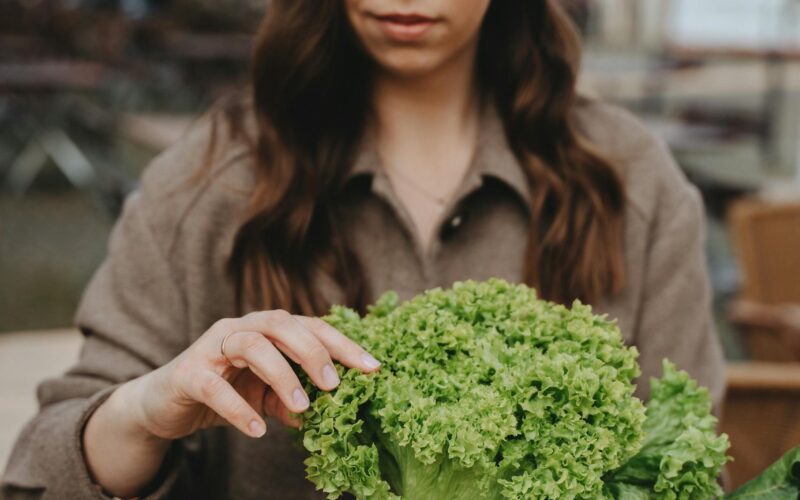In a recent Natural Womanhood article, we covered emergency contraceptives as a potential treatment for uterine fibroids. However, the research shows that while there are some positive indicators–such as improvement of fibroid size–the risks of liver toxicity with ECs are serious (plus, they keep women from having a cycle, which is critical to their overall health and well-being).
While approximately 80% of premenopausal women experience symptoms of uterine fibroids, the good news is that contraceptives aren’t the only potential treatment. In this article, we’ll look at what the research says about a variety of natural compounds and plant-based options for the treatment of uterine fibroids.
What the research says about phytoprogestins for treating uterine fibroids
Some plant-based compounds called phytoprogestins (literally translated as plant-progestins) have been shown to modulate the effect of natural progesterone in the body [1]. Examples of phytoestrogens include: Kaempferol, a flavonoid found in green leafy vegetables like spinach and kale, broccoli, beans, and certain herbs like dill and tarragon [2]; Apigenin, found in parsley, celery, onions, oranges, chamomile, thyme, oregano, basil, as well as in tea, beer, and wine [1]; Luteolin, a flavonoid found in celery, parsley, broccoli, onion leaves, carrots, peppers, cabbages, apple skins, and chrysanthemum flowers [3]; and Naringenin, which is the compound responsible for the bitter taste in citrus, including grapefruit, orange, and lemon [1].
Importantly, there have been several studies showing that phytoprogestins can modulate hormone receptors, as well as the actual release of progesterone in the uterus [1]. However, no studies exist that explore the specific effects of phytoestrogens on uterine fibroids.
What the research says about other natural compounds for treating uterine fibroids
There are, however, other natural compounds that have been shown to modulate progesterone signaling with the potential to shrink uterine fibroids. These include berberine, isoliquiritigenin, Adlay extracts, epigallocatechin gallate (EGCG), Curcumae Rhizoma-Sparganii Rhizoma (CRSR), Curcumin, and Vitamin D.
Berberine
Berberine is a natural compound found in plants like barberry. It has several health benefits, including improving mood after menopause, and helping with hormone-related issues. It also seems to fight tumors. In studies with uterine fibroids, berberine helped shrink tumor size and reduced the activity of genes linked to fibroid growth. It also blocked the effects of progesterone, suggesting that berberine may help stop fibroid growth by interfering with hormone signals [1].
Isoliquiritigenin
One of the active ingredients in licorice, isoliquiritigenin has been shown to decrease the body’s ability to produce estradiol (a type of estrogen made in the body during the reproductive years), as well as reduce progesterone levels in ovarian follicles, leading to the idea that isoliquiritigenin may help prevent and treat uterine fibroids [1].
Adlay Extracts
Adlay (also known as Job’s tears) has been tested in lab and animal studies for its effects on fibroids. In particular, Adlay was shown to stop fibroid cells from multiplying. In mice, extracts from Adlay reduced the thickness of the uterus, and lowered hormone levels that contribute to fibroid growth. This likely happens because Adlay interferes with the body’s hormone production. These findings suggest that Adlay may be a natural way to help slow fibroid growth [1].
Traditional herbs: Curcumae Rhizoma and Sparganii Rhizoma
Traditional Chinese herbs are commonly used to help treat uterine fibroids, often reducing the need for medication or surgery. The Curcumae Rhizoma and Sparganii Rhizoma herbal combination (also known as CRSR), made from turmeric root and sparganium root, has shown the ability to fight tumors, reduce inflammation, and block blood vessel growth that feeds tumors.
In a study on rats, giving this herbal mix lowered estrogen and progesterone levels in the blood. This likely happened because the herbs blocked the body’s hormone receptors. The treatment also helped reduce swelling in the uterus caused by hormone exposure. Other research shows that CRSR can slow down the growth of fibroid cells, and reduce certain proteins that contribute to fibroid development [1].
Epigallocatechin Gallate (EGCG)
EGCG is a powerful ingredient found in green tea, especially when the tea hasn’t been fermented. It helps prevent cell growth related to tumors, encourages damaged cells to die off, and reduces harmful enzymes.
A human study using EGCG supplements (800 mg/day for 4 months) showed that it reduced fibroid symptoms and improved women’s quality of life without any side effects. EGCG may work by affecting hormones like estrogen and progesterone. It has also been shown to block hormone receptors in cancer cells, especially in breast cancer, and works even better when paired with vitamin D, though more studies are needed to fully understand how EGCG affects fibroids [1].
Curcumin
Curcumin is the active ingredient in turmeric, and is widely used for its health benefits including fighting tumors and inflammation, and reducing the appearance of scar tissue. In lab studies, curcumin was shown to slow down the growth of fibroid cells and help them die naturally. It also reduced certain proteins that contribute to fibroid growth. Some studies suggest that curcumin can block hormone receptors, but research doesn’t yet have solid evidence about how it affects progesterone receptors specifically in fibroids [1].
Vitamin D
Vitamin D, mainly produced through sunlight exposure, plays many roles in the body. Women with fibroids often have low levels of vitamin D and its receptor in fibroid tissues. Vitamin D has been shown to reduce fibroid-related proteins and help shrink fibroids. It is generally safe to take, even in high doses (up to 50,000 IU weekly). In lab studies, vitamin D reduced levels of progesterone receptors in fibroid cells, which may help stop their growth, however, more research is being done worldwide to explore these benefits [1]. (Tip: While sunlight and animal sources for Vitamin D abound, if you’re looking for a plant-based source of Vitamin D, turn to mushrooms.)
The bottom line: what’s the best treatment for uterine fibroids?
Ongoing research regarding natural compounds, plant-based, and/or phytoprogestin treatments for uterine fibroids may soon point women and their doctors towards lower-risk solutions than the current standards of emergency contraceptives and hysterectomies. Quality of life improvements, along with seeking care from a restorative reproductive medicine-trained healthcare professional, may also provide solutions to fibroids that avoid temporary or permanent sterilization measures, instead restoring, protecting, and preserving fertility.







